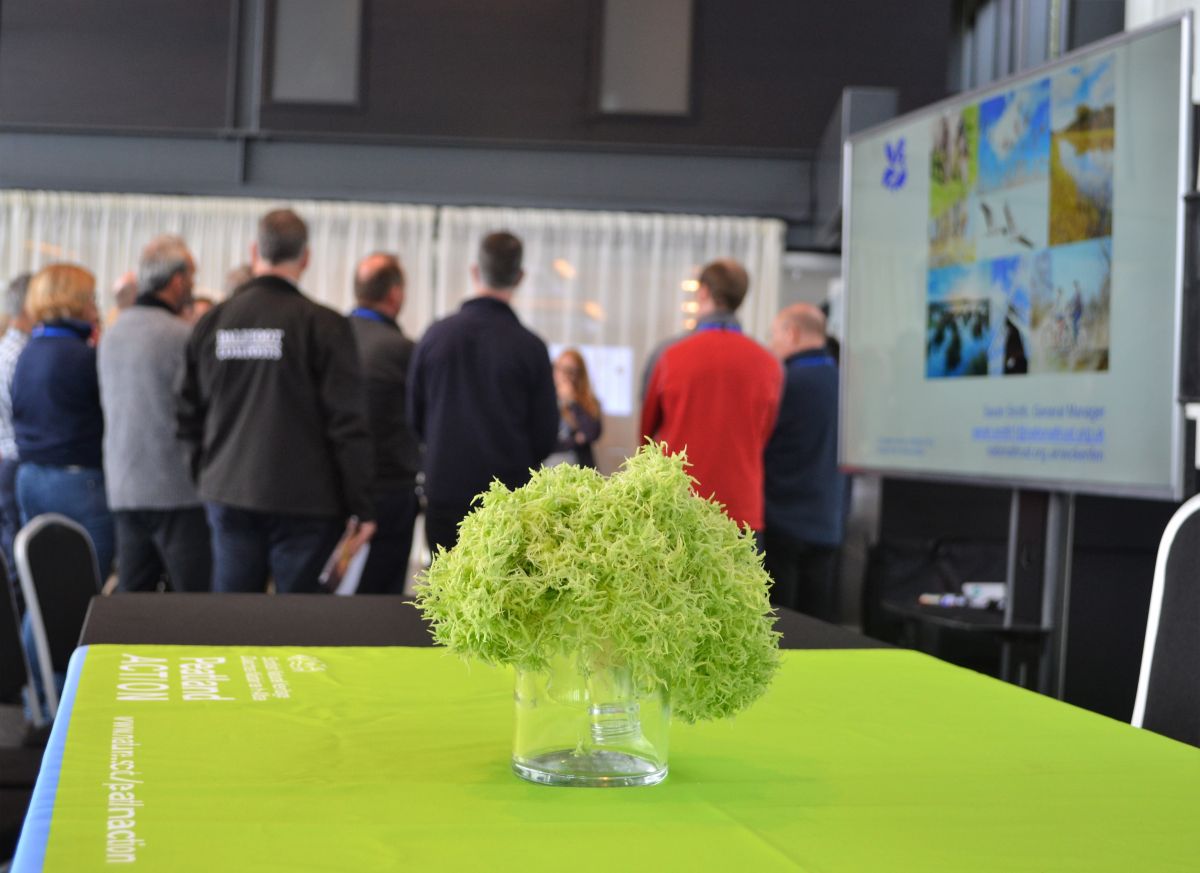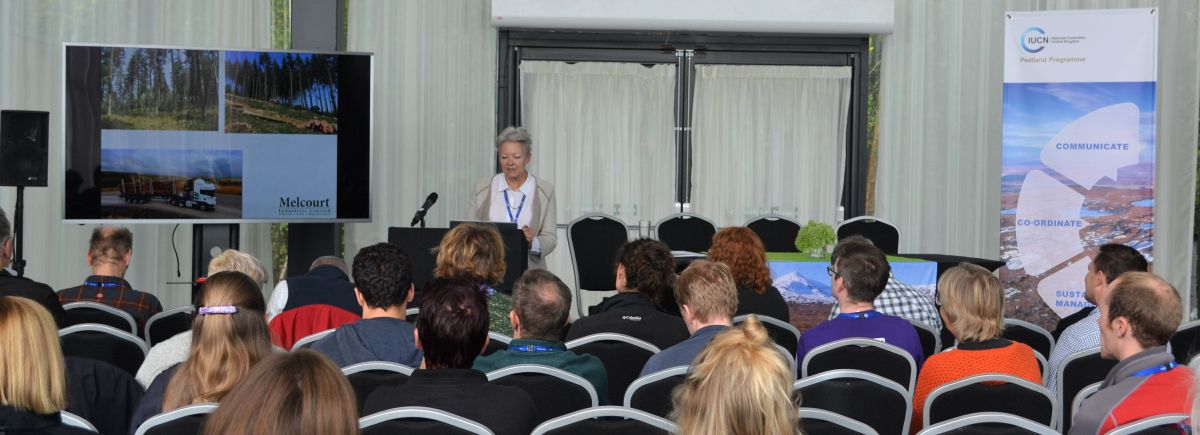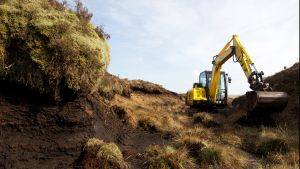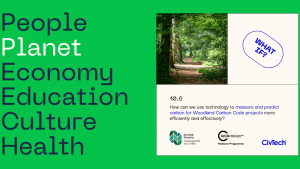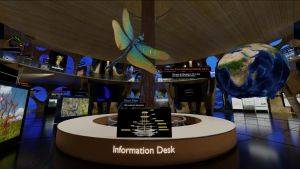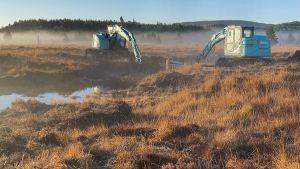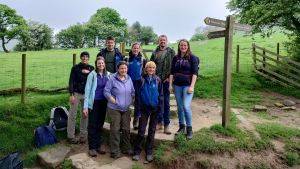Rural Economy and Peatlands - Tuesday 2nd October
The opening session included a welcome from each host organisation and set the scene for discussing public benefit provision in relation to sustainable peatland management, communities and economy.
- National Parks: Showcasing Natural Heritage and Scenery - James Stuart, Loch Lomond & the Trossachs National Park
- Sustainable Rural Communities in Scotland - Francesca Osowska, CEO, Scottish Natural Heritage
- A sustainable approach to peatlands - Dieter Helm
A policy framework to support rural economy and deliver peatland benefits
This session explored how we account for public benefits and reward their provision through either the public purse or private investment.
- What do we mean by public benefits – especially those provided by peatlands? - Jo Pike, Scottish Wildlife Trust
- What are the policy changes required to ensure we can reward for public benefits? - Tom Lancaster, RSPB
- Farming and Public Benefits - Thomas Binns, NFU England, Uplands Forum Chair
The role of the food and drink in sustainable environments
This session provided examples of how peatlands benefit business – with a focus on the food and drink sector. This was an opportunity for businesses to talk about how they use the upland environment as both a source of their produce and in their branding and marketing. It explored what the key considerations are in successfully promoting produce – a valued public benefit of peatlands – and how the objectives of food and drink provision can link with sustainable peatland management and reach the public.
- Setting the scene - Vicki Swales, Food Coalition Scotland
- Peatlands and Scotland’s drinking water supplies - Fraser Leith, Scottish Water [presentation not available]
- Using the natural landscapes to promote a product - Morag Garden, Scotch Whisky Association
- Scotland’s food and drink strategy - Ceri Ritchie, Scotland’s Rural College
Evaluating public attitudes to peatlands
This session provided an opportunity to explore why public attitudes are important – why do we care that people care about peatlands? Updates on research carried out on public attitudes and opinions in relation to peatlands, and their perception of the public benefits that they provide, were presented to spark discussion.
- Peatlands and the public - Paula Novo, Scotland’s Rural College
- Coupling biophysical models and socio-economic outcomes: lost in translation - Dylan Young, Tipping Points, University of Leeds [presentation not available]
- Methods of valuing the benefits of peatland restoration - Dave Chandler, Moors for the Future Partnership
This session provided an opportunity to gather together and highlight the tools which are used to engender volunteer and public support at a local level. Presentations showcased how engaging volunteers and using public help efficiently can benefit bogs and people.
Local community groups shared their experiences of their local peatlands including: why they got involved; how they try to inspire others to get involved and the challenges they have faced. These recollections illustrated what’s special about their patch of peat and how their involvement is crucial in its survival.
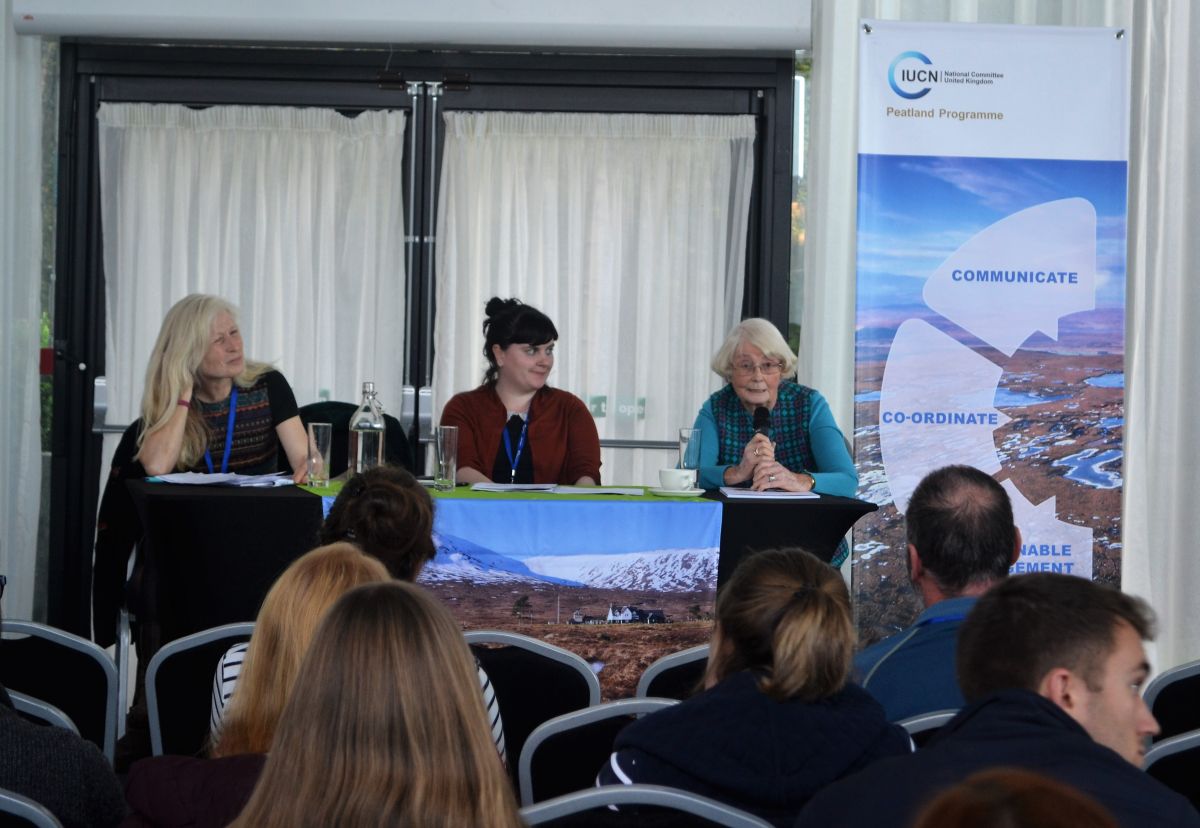
- What are the opportunities for the community to benefit from peatlands - Sue White, Shetland Amenity Trust
- Increasing engagement with local community and education opportunities - Rebecca Crawford, BogSquad, Butterfly Conservation
- How did Friends of Langlands Moss start and what are the benefits (motivations) - Maureen Potter, Friends of Langlands Moss
Quantifying peatland benefits
This session explored recent research work into the economic values placed on public benefits provided by peatlands and other habitats, and how these can be used to support their restoration and good management. It also provided a window into what public benefits private investors place a value on, and why they are interested in paying for restoration and conservation.
- Auditing peatlands: assessing their value - Hazel Trenbirth, Office for National Statistics
- Economics of peatlands - Andrew Moxey, Pareto-consulting
- Understanding the potential for private sector investment in natural capital – lessons from the Spey catchment - Anja Liski
Public Engagement - Wednesday 3rd October
Making peatland tourism work
This session included a series of short presentations from organisations at the forefront of visitor engagement on peatlands – focussing on the recreational, cultural and wellbeing benefits they provide.
- Opportunities and challenges of managing visitors on peatlands - Simon Gray, Fermanagh Council
- Establishing a tourist attraction in a remote area - Caroline Eccles, Flows to the Future Project
- Creating a landscape for people and nature in the Fens - Sarah Smith, National Trust, Wicken Fen
Phasing out peat: progress to date
This session provided updates on the progress made towards phasing out peat with examples from businesses and NGO’s including their key public communication messages, successes so far and ambitions to continue to drive progress.
Background: Defra introduced a voluntary target for amateur gardeners to phase out peat use by 2020 and a final phase out of 2030 for professional growers of fruit, vegetables and plants. This commitment was reaffirmed in Defra’s recent 25 Year Environment Plan, with a promise to look at introducing further measures if sufficient progress towards using peat alternatives has not been made by 2020. Scottish Government has also identified phasing out the horticultural use of peat as a priority in its work plan through the National Peatland Group.
With 2020 rapidly approaching, this session will shed light on the progress made towards meeting these targets and future work planned.
- Introduction - Olly Watts (RSPB)
- Making the Switch: Changing to Peat-Free Compost - Catherine Dawson (Melcourt Industries Ltd)
- Progress and challenges with peat replacement - Neil Bragg (Bulrush)
- Upping the Ante: What Action is Needed - Ben McCarthy (Plantlife)
Inspiring people in our natural environment using history
Peatlands have many stories to tell – from archaeological Bronze Age discoveries to unveiling environmental records that reveal past climate change. This session shed a light on some of the key moments in our peatlands history and consider how these stories can be used to engage with a different audience.
- Peatlands as an environmental archive - Paul Hughes, University of Southampton
- Cultural history hidden in peatlands - Ben Gearey, University of Cork
- History of Foulshaw Moss, Cumbria - David Harpley, Cumbria Wildlife Trust
Conservation and Land Management - Thursday 4th October
The Bigger Picture: International Perspective, UK Peatland Strategy and Country Highlights
This final plenary put the UK’s peatland work into a global context, with an introduction to the work of the Global Peatlands Initiative (GPI), of which the IUCN are a member. With a remit to save the world’s largest terrestrial organic carbon stock, and contribute to the delivery of several Sustainable Development Goals, the GPI has been actively promoting the peatland cause in countries with some of the largest extent of peatland. This session also looked at the strategic actions on peatlands being taken by countries around the world.
This session also provided a brief overview of the UK Peatland Strategy for those new to it and gave each of the four countries an opportunity to update delegates on the progress against each of the six goals set out in the strategy as well as highlights from national level plans. Speakers also identified steps being taken to enable reporting against the key goals.
- International perspective Overview of GPI & IUCN Resolution 43 – Dianna Kopansky, UN Environment
- UK Peatland Strategy: overview and next steps - Clifton Bain, IUCN UK Peatland Programme
- Highlights from Scotland: National Peatland Plan and Peatland Action - Andrew Coupar, Scottish Natural Heritage
- Highlights from Wales: SMS and LIFE - Peter Jones, Natural Resources Wales
- Highlights from Northern Ireland - Richard Weyl, Department of Agricuture, Environment and Rural Affairs (DAERA)
- Highlights from England: New strategy and £10 million programme - David Hunter, Department of Environment, food & rural affairs (Defra)
Provision of public benefits from sustainable land management.
Land managers from different sectors provided their perspective on the public benefits that well managed peatlands can provide and how their work contributes to the provision of these. Speakers reflected on where the win-win opportunities lie to meet land management goals as well as peatland benefits - and what further support is need to enhance these opportunities.
- Benefits of peatlands from a land manager perspective - Anne Gray, Heather Trust
- Managing peatlands to support the National Park targets - Simon Jones, Loch Lomond & The Trossachs National Park Authority
- Managing land to provide better water - David Smith, South West Water
The Practicalities: Setting up a large-scale restoration programme (working title)
Peatland Action and Yorkshire Peat Partnership shared their experiences of setting up large-scale restoration programmes, with a look at both the successes, but also challenges along the way and how these have been dealt with.
- How do you set up a large-scale restoration project? - Tim Thom, Yorkshire Peat Partnership
- The practicalities: Peatland Action discuss setting up a large scale restoration programme - Andrew McBride & Emily Taylor, Scottish Natural Heritage
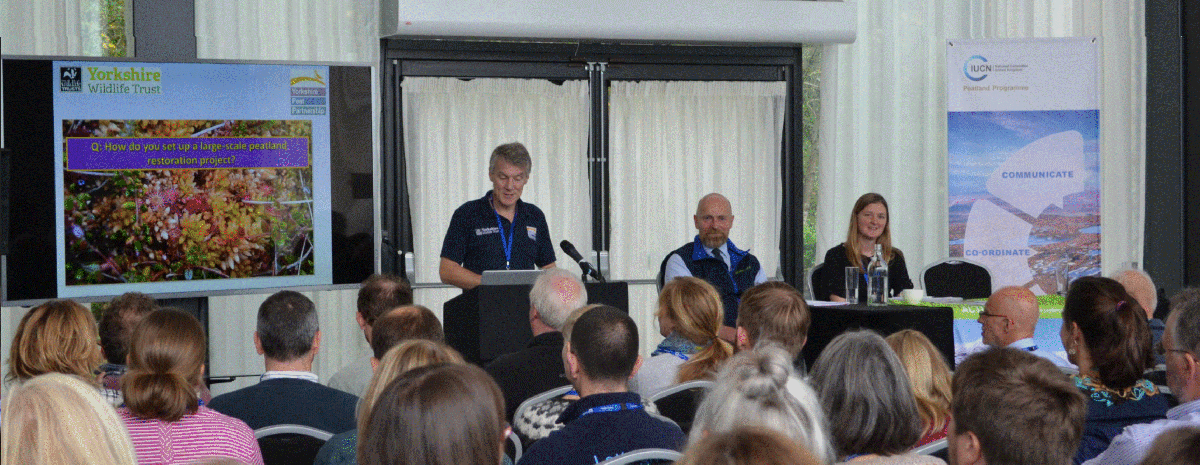
State of UK peatlands and monitoring
Our ability to report on progress in delivering peatland objectives is vital not only to allow assessment and reporting against national and international targets such as climate change, and biodiversity but also to demonstrate that our investment in peatlands is providing quantifiable benefits.
The working group behind the Commission of Inquiry Update reports on the State of UK Peatlands and Biodiversity shared their findings in this session along with updates on monitoring progress from JNCC and insight into a new IUCN UK PP initiative ‘Eyes on the Bog’ aimed at providing long term monitoring of peatland sites.
- Monitoring and Reporting on UK Peatlands - Paul Robinson, Joint Nature Conservation Committee (JNCC)
- Biodiversity Monitoring – Peter Jones, Natural Resources Wales
- Eyes on the Bog - Richard Lindsay, University of East London [Coming Soon]
Peatland restoration – tools for the future.
A broad pool of resources, skills and expertise will be required to enable the UK to continue to deliver the extensive peatland restoration needed in future. This session provided an opportunity for the peatland community to discuss what materials and training support is needed by existing and new practitioners to achieve best-practice peatland conservation now and in the future.
What are the peatland restoration challenges that need to be resolved? What and where are the conflicting views and how do we resolve these as a community?
This workshop started with a quick introduction to the Conserving Bogs handbook, available online and the restoration training courses being set up by the IUCN UK Peatland Programme.
- Conserving Bogs: An update - Tim Thom, Yorkshire Peat Partnership
- Peatland Training Courses - Richard Lindsay, University of East London [Coming Soon]
Managing at a catchment-scale
Led by the working group behind the Commission of Inquiry Update report on Peatland Catchments, this session will reveal the findings of the report.
- Findings of the Commission of Inquiry Update - Tim Allott, University of Manchester
Innovation in peatland restoration
As a common funding requirement and necessary way to address new challenges this session focussed on sharing innovation to support conservation.
Peatland Action shared some of the innovative solutions they have come up with to address challenging restoration scenarios in Scotland. The speakers covered upland and lowland habitats as well as including techniques from the forestry and renewables sector.
- Innovation in Peatland Restoration with Peatland Action - Stephen Corcoran and Ewan Campbell, Scottish Natural Heritage
Planning for the future: land management and climate change
This session focussed on climate change as one of the major drivers for peatland conservation and restoration with an update on the science around peatlands and carbon, and their role in relation to climate change. Speakers also explored the response needed to a changing climate looking at how we can adapt lowland agriculture as well as the latest policy thinking around climate change adaptation and how this relates to peatlands generally.
- Carbon Report: Findings – how we account for carbon - Chris Evans, Centre of Ecology and Hydrology [presentation not available]
- Changing land management practice: shifting to wetland agriculture - Deborah Land, Natural England
- Adapting to climate change – Olly Watts, RSPB
